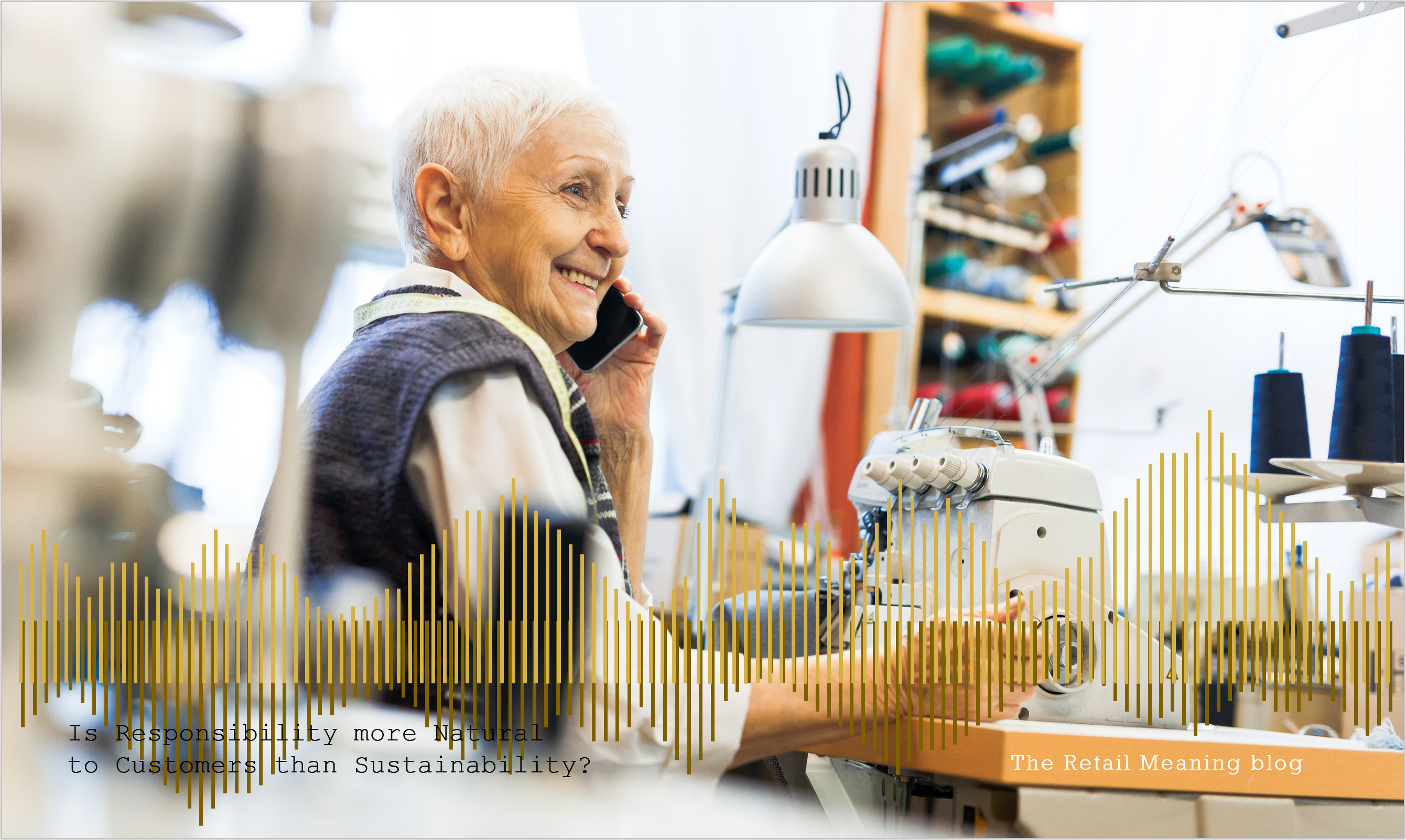Getting the message across to customers about sustainability is a challenge. Not only is it one of those words that can mean many things to many people, but it often involves technical data and scientific concepts, and is a nightmare to assess with its veils of spurious marketing claims and dubious transparency.
So whilst many customers fully agree with the principles of recycled and recyclable materials, the sourcing of natural materials, and improving worker welfare, unless they study the detail and the data, which most don’t, then choosing what and where to buy is not quick or easy, and as a result sustainability is pushed down the list of priorities when buying new clothes.
Looking around many popular fashion brands there is a shift in brand positioning when it comes to sustainability. It is a subtle but significant move from being ‘Sustainable Retailers’ to being ‘Responsible Retailers’. Where the added ingredient is people.
Its a smart move because customers associate and empathize with people. Look at the way that brands use influencers, celebrities and experts to promote new fashions. They particularly connect with the normality and impartiality of other everyday people.
Sustainability is being more successfully communicated through people. The sequence of people who are involved in the product supply chain, from the founders, the growers, the fabric makers, the artisans and manufacturers, the shopkeepers, the customers and the communities.
Each tells their impartial and passionate story about the role they play in a genuinely sustainable business. We have access to their stories, and we can listen and see impartially through their independent social feeds.
Ultimately, customers trust people to be sustainably honest and that is enough. Customers are happier to validate people than they are to validate data.
There is of course, the need for validated sustainability data when we get down to the details of individual products and ranges. But again, the smart brands are employing trustworthy third party people to tell the truth to customers.
Who is speaking is as important as what they are saying!
If customers want to study the supply chain map, compare CO2 emissions or water usage then it is there, but it is ‘Responsible People’ who get the message across.
So, is the humanisation of sustainable credentials a more natural way to speak to customers? Importantly is it a more successful way to communicate both precise and general sustainability information?
I would recommend to any brand to be seen as a ‘Responsible Retailer’ using people to show they care about sustainability, but also workers rights, employee conditions, customer care, charity, social and community activities and involvement.
I would cut out the middle ground of unconvincing claims, and focus on both the convincing minuti of products delivered by ‘Responsible experts,’ and the enthusiasm and compassion of the business supply chain as seen through the lives and loves of ‘Responsible collaborators!’
